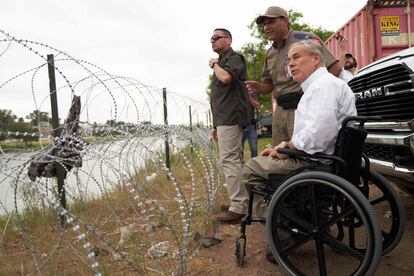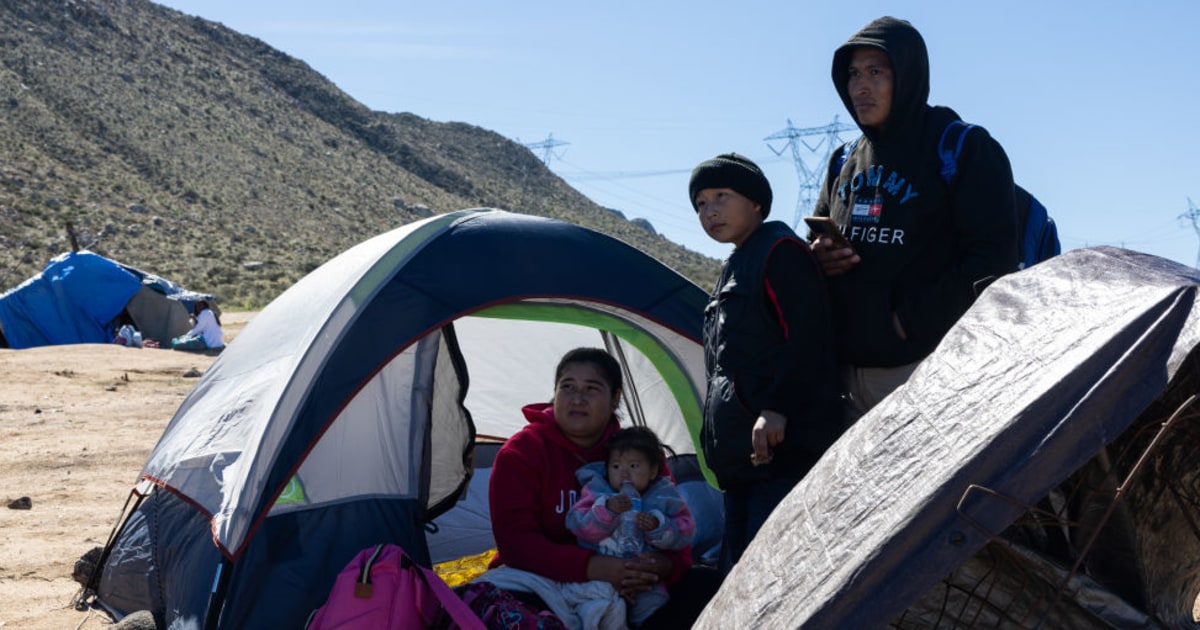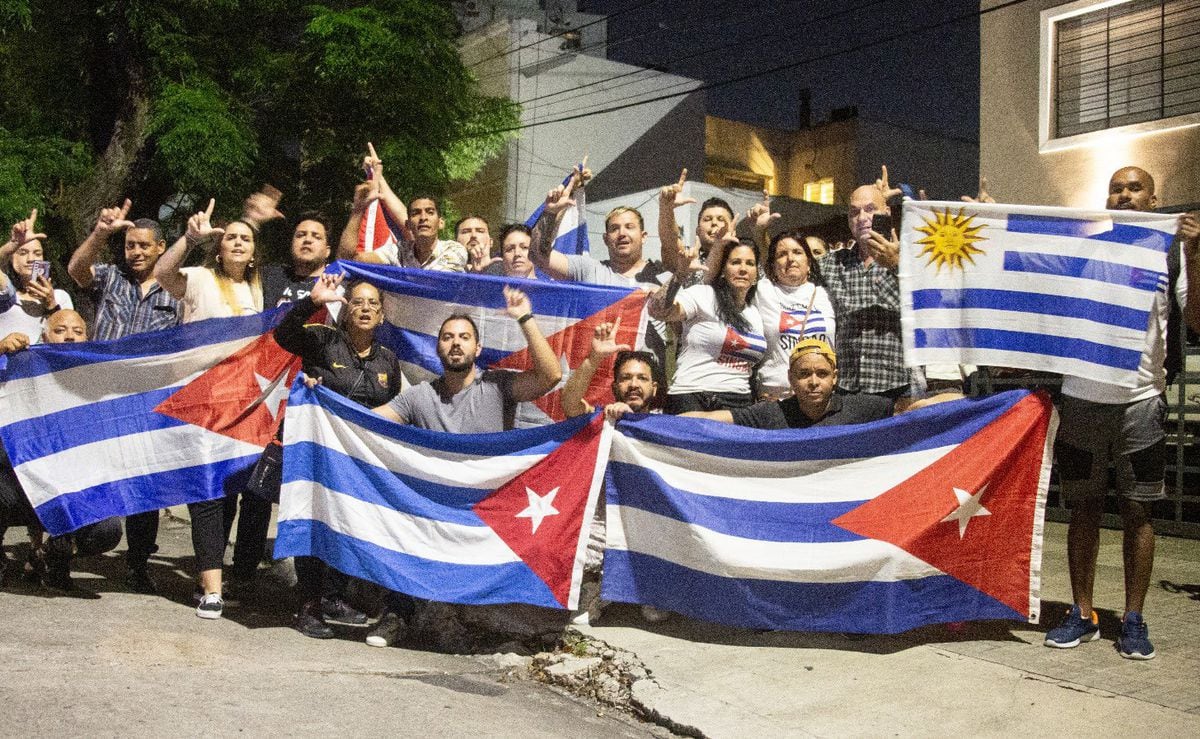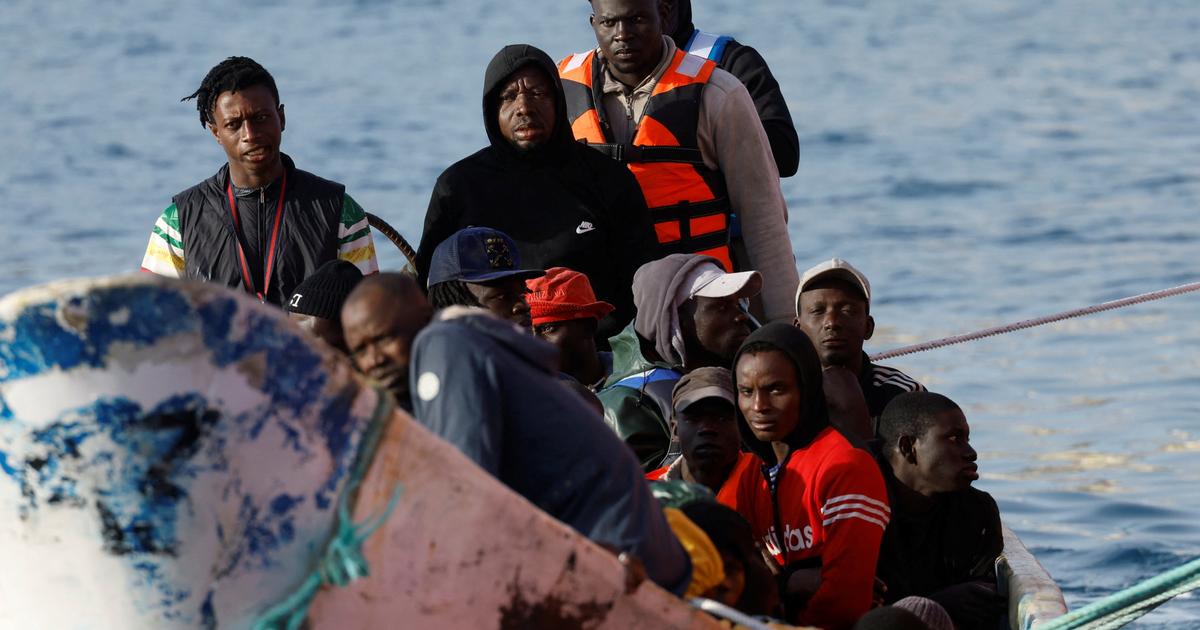Erold, a 25-year-old Haitian stranded at the border for two months, has a message for Judge Robert Summerhays: "Don't mix people's lives with politics."
The news reached this gap of land a few meters from the Rio Grande that a Louisiana magistrate, almost 1,000 kilometers from that green river that separates Mexico from the United States, has left in place a sanitary rule that allows migrants to be quickly expelled by a pandemic that few remember.
“We want to cross legally.
All Haitians want to go to work and live in peace,” says Erold, who was a teacher in Port-au-Prince, the Haitian capital, in English.
The judicial decision announced last Friday, which maintains the hot expulsion of migrants who cross the southern border of the United States from Mexico,
The ruling by Summerhays, who came to the Louisiana District Court appointed by Donald Trump, has put on hold the plans of the Joe Biden Administration to channel US immigration policy.
The sanitary measure was going to be lifted on Monday, May 23, but the judge has extended it for the time being.
This has brought calm on the US side in an election year.
“For us it was a relief.
It's what we wanted,” Mayor Javier Villalobos, the first Republican elected from the city of McAllen in nearly 25 years, said Sunday.
The politician claims that Title 42 [a public health order] allows local authorities to detain and remove about 1,500 people.
“But if they lifted it, we were going to receive many more.
What was happening?
We sank,” he stated in an interview with Telemundo.
More information
A migrant and his son drowned in the Suchiate River
The Biden government affirmed that it will abide by the ruling, but will appeal in court to annul the rule.
The court battle will take months.
Title 42 was established by Trump at the start of the pandemic and has helped to quickly reduce pressure on the border, an area that has seen a sharp increase in immigration since the Democrat came to the White House.
Immigration authorities have invoked it for two years to justify nearly two million expulsions (a figure that includes migrants expelled several times).
Roxana Vigil, a 28-year-old Salvadoran, was one of those affected by this rule on Monday.
She entered the United States at daybreak.
She and her group of about 22 people crossed the river on a raft and then walked uphill through rough terrain.
At the bottom of the hill, immigration personnel were already waiting for them.
They put the group on a bus that retraced their steps.
The vehicle stopped just over the bridge.
It is just one of dozens of similar trips that take place every day.
“I came to ask for asylum and they returned me.
I don't even know what to do.
I can't go back to El Salvador,” Roxana said through tears, sitting on the Mexican side.
On her legs she had a small bag of hers and her seven-year-old daughter, who made a trip with her that began 22 days ago in San Miguel, in eastern El Salvador.
His shoes were stained with dirt and mud.
None of the deportees, most of them women – there was only one man and more than a dozen children – had shoelaces.
"I don't know why they take it away from us.
They must think that we are going to hang ourselves, ”she pointed out.
A woman from Honduras waits at a migrant shelter, on May 23, 2022, in Tijuana, Mexico.Gregory Bull (AP)
"What a mess!" lamented the woman, mortified by the thousands of dollars that her brother, in Virginia, collected to pay for the trip.
But what hurts Roxana the most is that she didn't even have the opportunity for someone in the United States to hear her story.
She wanted to tell that her husband had been murdered four years ago.
That she was afraid to return to her country and end up in jail for a law approved by Nayib Bukele that, according to her, persecutes those who wear tattoos.
And that the father of her daughter lived in Dallas, not so many kilometers from there, but that he had not been enough of a man to give the girl her last name, which would give her the long-awaited papers to emigrate.
“They took data and fingerprints from us.
They didn't talk to one or anything,” she assured.
Hundreds of migrants must fend for themselves every day in Reynosa, 130 kilometers from the Gulf of Mexico.
The city is one of several border points that has suffered from this new wave of migrants.
A couple of kilometers from the international bridge, what could be called the little Port-au-Prince has been built.
Hundreds of people gather under two trees that mark the intersection of two unpaved roads.
At the crossroads there are Haitian women selling orange juice, fried chicken stalls and the sound of the
konpa
coming out of loudspeakers.
In front of this tiny market is one of the two hostels that have been overwhelmed by the arrival of Caribbean people.
“Now we have a lot more Haitians, not so many Central Americans anymore,” says Paulien Naber, a Dutch woman with 25 years in Mexico who runs the shelter of the Kaleo International Christian church.
The site looks like a fortress, with concrete walls more than three meters high.
Inside there are 160 people, mainly families and single mothers.
Migrants sleep on inflatable mattresses waiting for a call to come into their phones one day with good news about their asylum claims.
This shelter began to be built last January.
And now they are about to add a second level with rooms to expand the number of people it can receive.
Outside that bunker there are hundreds of Haitians, between 200 and 300, Naber calculates, waiting sleeping in the street and under the treetops for a place to be vacated inside.
Many believe that crossing the threshold will bring them closer to the United States.
"That's the promised land for them," says the shelter's director.
Nearly 300 miles away, members of the Texas National Guard were guarding the town of Eagle Pass, another crossing point on the troubled line.
The images that have come from there are those of a war zone: soldiers dressed in camouflage uniforms and helmets;
armed with automatic rifles and Hummer-type military vehicles.
Almost 70 kilometers of concertina wire have been deployed in the area, which has sharp blades designed to do great damage to the skin.
Texas Governor Greg Abbott tours the US-Mexico border in Eagle Pass, Texas, on May 23, 2022. ALLISON DINNER (AFP)
The governor of Texas, Republican Greg Abbott, has launched a rallying cry this Monday.
The local president visited Eagle Pass, which borders the Mexican Piedras Negras, in the Mexican state of Coahuila.
“That wire makes it very clear that if you cross it you are entering the United States illegally and that can land you in jail.
We want to be more aggressive with what we're doing and make more arrests of people trespassing," Abbott said.
The governor affirms, without citing where he gets the estimate from, that there are 100,000 people on the Mexican side waiting to cross into Texas.
In his pulse with the Joe Biden government, the Republican has so far sent 45 buses of immigrants to Washington.
“Just a year and a half ago we had the lowest number of illegal immigration in decades.
And in this time we have reached the largest immigration ever seen.
We need a president who is willing to enforce the immigration laws of this country," stressed the president, a faithful supporter of Donald Trump's policies.
Subscribe here to the EL PAÍS América newsletter and receive all the key information on current affairs in the region.






/cloudfront-eu-central-1.images.arcpublishing.com/prisa/YLOEMFF4HJC23HMOYLNKJIYY3A.jpg)




/cloudfront-eu-central-1.images.arcpublishing.com/prisa/KMEYMJKESBAZBE4MRBAM4TGHIQ.jpg)


